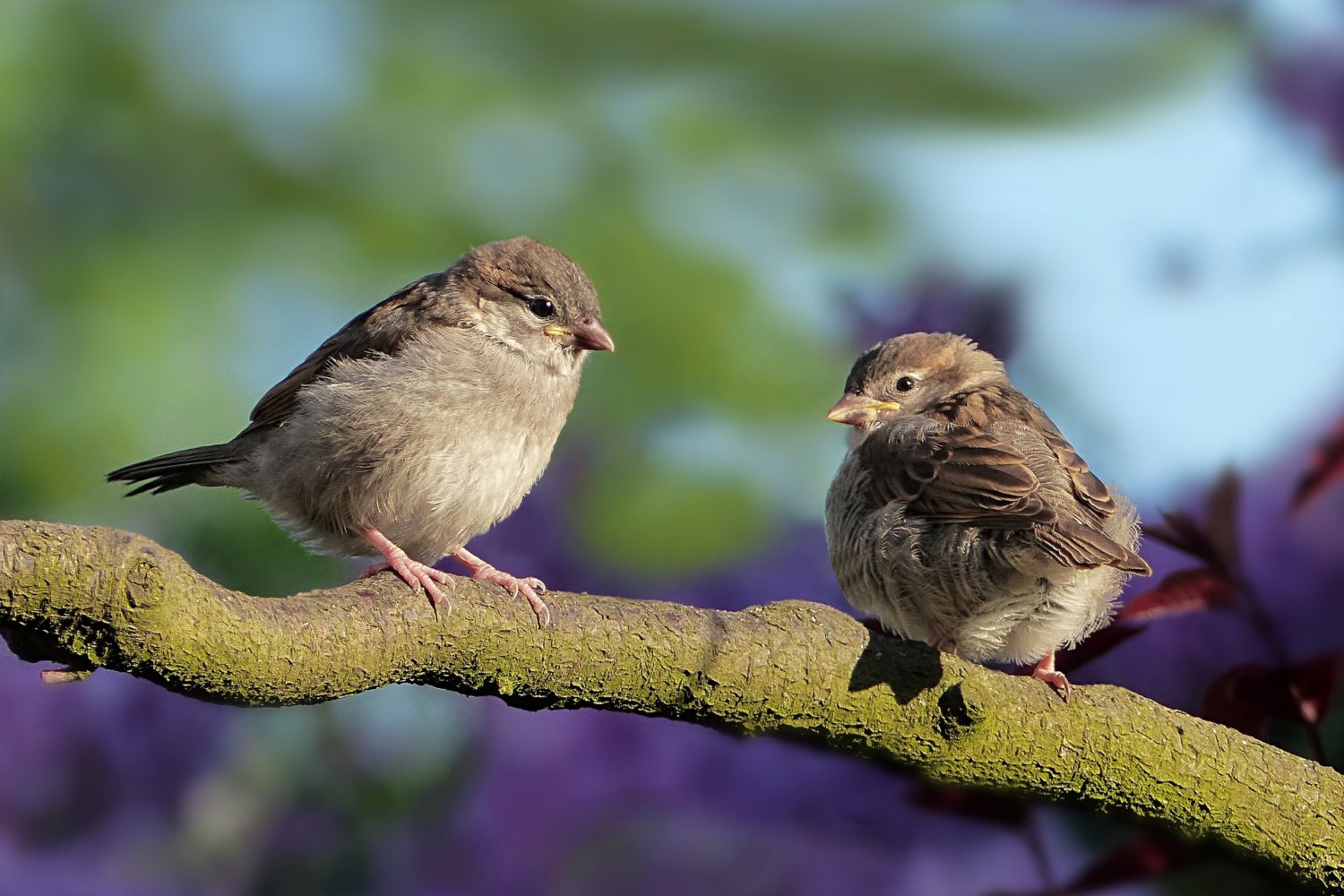On a late winter afternoon, Jonathan Alderfer laces up his boots and climbs a ladder to the roof of his house in the wooded hills of DC’s Palisades neighborhood.
On the roof next door, two painters put a coat on a swath of weather-stained boards. Down the street, a man hunches over his gutters, tossing handfuls of matted black leaves into his yard.
Alderfer carries a telescope over his shoulder and binoculars in his pocket. Through the branches of the hemlocks across the street, he can see all the way to Georgetown Reservoir, a popular spot for migrating flocks.
“You see the one with the white spot on the head? That one’s a bufflehead duck, a female,” he says.
Through the green scope, the white spot on the wading bird is no more than a speck, but Alderfer, one of North America’s foremost bird illustrators, can pick out birds the way a good hitter spots a curveball.
For the past 20 years, Alderfer has illustrated field guides for the birders of America—46 million, according to one estimate, a number that suggests that despite how far people remove themselves from nature, they still want to connect to the wild. ➝
As a child of eight, Alderfer copied birds out of the Roger Tory Peterson field guides his parents kept around the house. He used crayons and charcoal pencils to draw woodpeckers and owls.
His house in the Palisades, where four generations of his family have lived, is a gallery of relatives. A portrait of his great-grandfather, a bald and bearded doctor who worked for the Dutch East India Company on the island of Java, hangs over the fireplace. It was painted by his great-grandmother. Above it, on a wooden ledge, sits a green wooden boat his uncle built. A painting of a violin by his mother rests on the secretary. Throughout the house, the walls are flocked with Alderfer’s birds.
Of all wild animals, birds are the most visible. They fly. You can find them almost anywhere. Of the roughly 950 species that live in or migrate through the United States, more than 300 have been spotted in DC since 1842, according to the Maryland Ornithological Society. Dozens more are found in the Shenandoah or on the Eastern Shore.
From his yard, Alderfer has seen 139 species. He lights up like a starstruck teenager when talking about being on his roof and seeing a black skimmer—the only bird in the world whose bottom bill, which it uses to feel for fish as it skims over water, is longer than the top. His house is also in the path of planes—“fixed-wing, steel-coated birds,” he calls them—taking off and landing at Reagan National Airport. Alderfer doesn’t give them a glance. His eyes are on a cardinal in the bushes, white-throated sparrows on the driveway, a fish crow flying by.
After graduating from DC’s Sidwell Friends School in 1967, Alderfer headed to the University of Chicago. Inspired by a meeting there with abstract sculptor Henry Moore but wary of the school’s emphasis on theory, Alderfer returned to DC after a semester, enrolling in classes at the Corcoran School of Art to avoid the Vietnam draft. Coming from a family of Quakers—his father had been a conscientious objector in World War II—Alderfer opposed the war.
Alderfer moved to New York City to continue his studies at Cooper Union, one of the country’s oldest art-and-science institutions. There he met Zora Margolis, an actress who worked as a cigarette model to pay the bills. Her picture was plastered throughout the subway on Virginia Slims posters, and she was performing in the first feminist musical in New York, a play directed by Joseph Papp. Alderfer laughs as he recalls Zora in the play shouting something to the effect of “Reject the sperm!”
“She was clearly acting,” he says. “Off-stage we were falling in love.” Within a year, the two were married.
At Cooper Union, Alderfer learned from a drawing teacher how to make his hand respond to what he saw. “I was a lazy artist before that,” he says. “I learned that art wasn’t about making a pretty picture but about seeing something deeply and getting it down so others could see it.”
Content with what he’d learned, Alderfer dropped out of Cooper Union, devoting his time to carpentry and plumbing work in loft apartments around New York City until the thrill of bohemian life gave way to disdain for urban materialism. “It was the ’70s, hippie times,” he says. “We all wanted to get back to nature.”
In 1970, Alderfer moved with his bride to the pine woods of Vermont. At the end of their mile long dirt driveway, they started work on a cabin, living in a teepee while Alderfer chopped the logs.
For the first time since childhood, birds captured Alderfer’s imagination. “That first spring, there were some warblers nesting around the house, always singing, and it was extremely exciting,” he says.
Alderfer became obsessed with identifying the birds—their songs, their shapes, their wingspans, their field marks. A stout, pointy bill with a red plumage and shiny black wings? A male scarlet tanager. Alderfer kept a Peterson guide in the bathroom and carried it with him into the woods.
“I think about all the women whose husbands gamble or chase other women,” Zora says. “Birding is pretty benign.”
To make money, Jonathan taught carpentry at a community center. Zora worked part-time as a cook at a health-food restaurant. They had no running water or electricity. Their radio was the songs of birds and the banter of bugs.
The wild couldn’t satisfy all their needs. Zora wanted to give acting another shot, and Jonathan, having identified scores of Northeastern birds, itched to learn about others.
In 1976 the Alderfers moved to Los Angeles. Zora auditioned at film studios and graduated from UCLA. Jonathan built custom cabinets for Hollywood types. For Liberace he made a black-lacquered bar in the shape of a grand piano.
Alderfer began painting birds, often doing research at the Natural History Museum of Los Angeles County, home to a collection of 114,000 bird specimens. To make his paintings realistic, John James Audubon, the great 19th-century bird illustrator, shot scores of birds with his rifle so he could see them up close and get a better feel for their marks. Alderfer used the museum’s collection and its expertise to check his own paintings for accuracy.
“The first stuff was atrocious in retrospect,” he says. “You get better at it through familiarity, but also, as you see birds throughout your life, you kind of internalize it so you have mental pictures of birds and you know when you’re painting whether it’s right or wrong.”
Alderfer became friends with Kimball Garrett, manager of the museum’s bird collection, and Jon Dunn, a National Geographic bird-guide consultant. Garrett and Dunn had met as young teens on an Audubon Society field trip where they competed to identify the most birds. The rivalry evolved into friendship, and the two were widely published in Audubon Society publications.
Alderfer began illustrating Garrett and Dunn’s articles. “He can really get down onto paper what a bird looks like, not just the color and field marks—that’s the old Peterson system, which used templates for all the birds in a species,” Garrett says. “Peterson wasn’t nearly as good as Jonathan at getting the shapes and the postures of birds right.”
Alderfer and the duo also teamed up for some adventurous bird chasing. A new style of birding was taking off in Southern California in which birders hunted rare birds in rare places. Once, Garrett and Alderfer raced through the Mojave desert to see a common pochard, a Eurasian duck, that had been spotted at an oasis. Alderfer, who lost track of his speed, got pulled over for doing 85 miles an hour. Ticket in hand, he kept driving, albeit slower, until they saw the bird.
Dunn and Alderfer once sneaked into Edwards Air Force Base. They parked Dunn’s 1979 Honda Civic on what they thought was a dry lake bed, but as they left the car, it sank into mud. They hiked out to the gate and explained themselves to the guards, who sent them away with a warning. When they returned to haul the car out, the two saw a semipalmated sandpiper—California’s earliest recorded sighting in a single year.
By the time Alderfer moved back to DC in 1996 to inherit the house his grandparents and parents had lived in, his illustrations had garnered fans outside of California. The National Geographic Society had hired him to help steer its expanding birding program, and he contributed to two of the country’s most popular field guides—Birds of North America and All the Birds of North America. In the background of a duck illustration in All the Birds, Alderfer brushed onto a bridge his daughter’s and wife’s initials in graffiti-script. In the same book, there’s a ship named Karly—their daughter’s name.
In his studio in the Palisades, a converted garage where his grandparents parked their Nash Rambler, Alderfer stands before a large window. On the sloped desk before him is a white canvas with several sketches of ducks, each waiting for Alderfer to give it plumage. He holds his brush steady, as if any sudden movement could spook the birds off the page.
“I try to depict a bird the way you might see it with an excellent view through the binoculars,” he says, “not anything too photographic but very clearly.”
The cabinets behind him are filled with paintings and wood carvings of hundreds of birds, from ones he colored as a kid to ones featured in field guides, whose prints he’s displayed and sold in exhibits at the Watergate Gallery. In the childhood file, which his mother assembled, is a drawing of a scarlet tanager. The glare of the bird’s red body beneath the studio lights is evidence of the work he put into coloring it some 50 years ago.
Outside, sparrows peck for seeds in the feeders strewn across the yard. It’s dusk, the best time to spot birds on the reservoir. The roof affords a nice view, but the closer you can get, the better you can see.
After a short drive, Alderfer parks his dusty Subaru on MacArthur Boulevard, crossing the street toward the tall chain-link fence marked no trespassing. As children, he and his brother would sneak in to fish and skip stones.
Today some 600 ducks and gulls are perched on the dikes or wading in the water, feeding and bathing before a night’s rest at Hains Point near the Mall. Through the binoculars, the fence disappears, the water becomes smooth, and the birds emerge, still and clear, as if on a canvas, before they fly away.
















